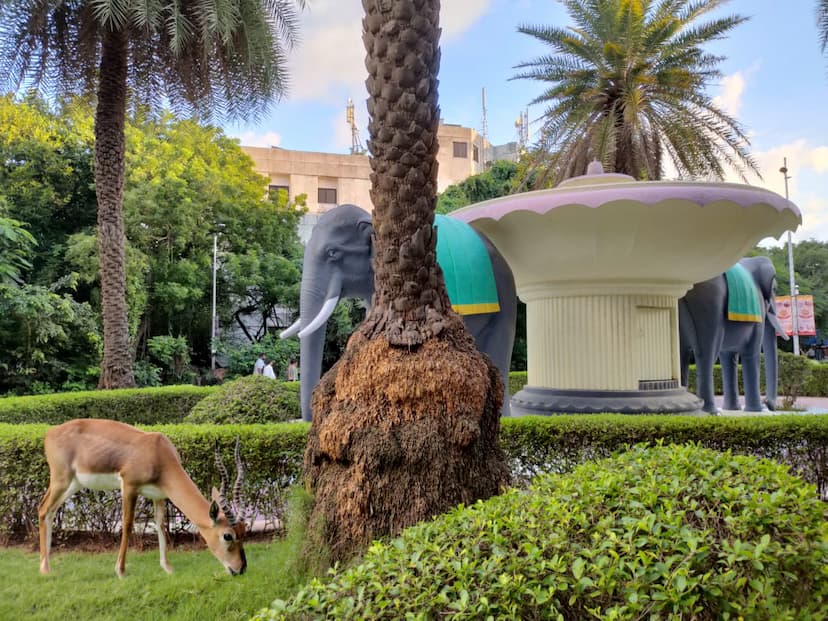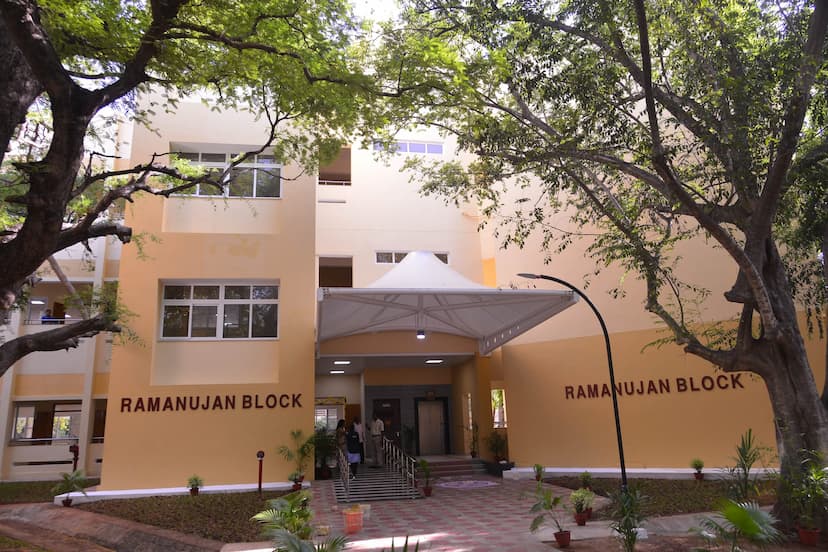Tvasta collaborates with great Saint Gobain

Tvasta Manufacturing Solutions has collaborated with Saint Gobain to develop a 3D printed Doffing Unit to protect India’s healthcare workers in the frontlines against COVID-19.
Tvasta is a deep tech startup founded by IIT Madras alumni and Saint-Gobain is a leading multinational company.


Tvasta collaborates with great Saint Gobain
The Doffings Units developed by Tvasta have already been launched and a third one is under construction.
The first such unit developed by Tvasta and Saint Gobain has already been deployed at a Government Hospital in Kancheepuram near Chennai, Tamil Nadu, while the second unit has been established at Omandurar Medical College and Hospital, Chennai.
The Foundation Stone for the third Doffing Unit has been laid at Government Medical College and Hospital, Thiruvalluvar.

What is Doffing? It is the procedure of effective and safe removal and proper disposal of PPE.
Such Doffing Units are critical for doctors, nurses and other healthcare workers to sanitize themselves after their shifts, safely remove the PPE kits and dispose of them properly.
Read More – NIMS University Jaipur

This will ensure that the healthcare workers can go home without taking the risk of carrying the infection.
The major advantage of a 3D Printed Doffing Unit is that the time spent by construction workers at the Hospital, which will be filled with COVID-19 Patients is minimal.
The units are printed offsite with only assembly happening onsite – the hospital. This particular structure was built using Tvasta’s 3D Printing facility in Perungudi, Chennai and transported to the construction site in a modular manner.
The concrete 3D printing technology is a ‘Ready-to-Implement Methodology’ with no lead time on manufacturing, which significantly reduces the construction time.

This ‘Made In India’ technology has the potential to change the term ‘building’ to ‘printing’ in the near future
Ma. Subramanian, Minister for Medical and Family Welfare, Government of Tamil Nadu, inaugurated the Doffing Units developed by Tvasta and Saint Gobain at Government Headquarters Hospital, Kancheepuram and Omandurar Medical College and Hospital, Chennai, on 16 July while also laying the foundation stone for the unit coming up at Government Medical College and Hospital, Thiruvalluvar.
Mr. P.K. Sekar Babu, Minister for Hindu Religious and Charitable Endowments, Government of Tamil Nadu, Dr J. Radhakrishnan IAS, Principal Secretary, Department of Health and Family Welfare, Government of Tamil Nadu, and Mrs. Lise Talbot Barre, Consul General of France in Puducherry and Chennai were also present in the function.

Ma. Subramanian lauded the efforts of Tvasta and Saint Gobain.
‘Saint-Gobain Company has provided financial support under CSR (corporate social responsibility) initiatives to set up oxygen generators and these Doffing Units at Government Hospitals, which will help frontline healtcare workers to safely remove their PPEs.’
These Doffing Units will be a model to the entire country.
He thanked Saint-Gobain for helping set up these advanced facilities, which are in critical need now.
These Doffing Units developed by Tvasta and Saint Gobain will be a major boost to healthcare infrastructure in India.
It is integrated with equipment such as UV-C sterilisation box, automatic sanitiser dispenser and an automatic soap dispensers.
EPMCR, a design consulting agency based out of IIT Madras Research Park, partnered with Tvasta and Saint Gobain to ensure that the structure is designed in an optimal manner for reduced risk of exposure and easy sanitation.
Co-founder of Tvasta Manufacturing Solutions Mr. Parivarthan Reddy said in these trying times, it is absolutely necessary to have a safe and well-equipped Doffing Unit to ease the burden and a bit of worry of the healthcare professionals.
Tvasta and Saint-Gobain are planning to work further to contribute to the valiant effort being undertaken by healthcare professionals, he said.
The cofounder of Tvasta further said using their 3D Printing Technology, designs can be made for both performance and function, without having extra cost implications.
This makes individual customizations and personalization possible, even at huge scale, for all strata of society, said cofounder of Tvasta.
Dr. Loic Jourdaine, R and D Director at Saint Gobain Research India spoke at the inauguration of the doffing unit developed by Tvasta and Saint Gobain.

‘We aim to prioritize the hygiene and safety of the healthcare workers by contributing with necessary relief support.’
‘We are delighted to collaborate with emerging start-ups like TVASTA in these testing times to set up India’s first-of-its-kind 3D doffing station that is made in India.’
The advantage of 3D printed construction technology is that it is faster, prefabricated, sustainable with zero waste, utilizing lesser raw materials.
The wall elements were printed at a workshop, transported and assembled at the site in few hours.
Manufacturing and assembling does not require skilled labour, said Dr. Loic Jourdaine during the inauguration of Doffing Unit developed by Tvasta and Saint Gobain.
Doctors, nurses and other frontline workers returning from treating patients in COVID wards can directly enter the doffing unit to sanitise themselves.
The doffing unit developed by Tvasta and Saint Gobain is of 150 Square feet and is equipped with a wash basin, Water Closet, and shower.
A special provision for PPE disposal is provided with a disposal chute to minimise the contamination from the PPE.
This design and selection of the equipment have been regarded as the minimum requirement to ensure the safety of frontline workers.

This technology offers a significant reduction in time and cost of the unit.
Plumbing and electrical lines are integrated along the 3D printed walls.
This helps in quick commissioning of the unit at site.
The walls are 3D printed with an optimal design with positioned gaps.
This significantly reduces the raw material usage and enhances the thermal insulation making it a more sustainable structure compared to conventional structures.
Tvasta Manufacturing Solutions is part of the new incubator of the Ministry of Housing and Urban Affairs, Government of India, called ‘ASHA Incubator,’ established at IIT Madras.
Tvasta was co-founded by three IIT Madras Alums of 2016 Batch – Mr. Adithya VS (Dept of Mechanical Engineering), Chief Executive Officer, Mr. Vidyashankar C. (Dept of Electrical Engineering), Chief Operating Officer, and Mr. Parivarthan Reddy (Dept of Mechanical Engineering), Chief Technology Officer.
Tvasta’s ‘Concrete 3D Printing’ is an automated manufacturing method for constructing three-dimensional real-life structures (at all realizable scales).
The technique utilizes a Concrete 3D Printer – a Tvasta product – which accepts a computerized three-dimensional design file from the user and fabricates a 3D structure in a layer-by-layer manner by extruding flowable material akin to concrete.

Ø Potentially reduce overall construction cost significantly
Ø Order of magnitude difference in overall construction time
Ø Bring down the related carbon footprint
Ø Increase productivity of labour involved
Ø Offer raw material flexibility – utilization of eco-friendly materials
Tvasta’s ‘Concrete 3D Printing’ is an automated manufacturing method for constructing three-dimensional real-life structures (at all realizable scales).
The technique utilizes a concrete 3D Printer – a Tvasta product – which accepts a computerized three-dimensional design file from the user and fabricates a 3D structure in a layer-by-layer manner by extruding a specialized type of concrete specifically designed for the purpose.









